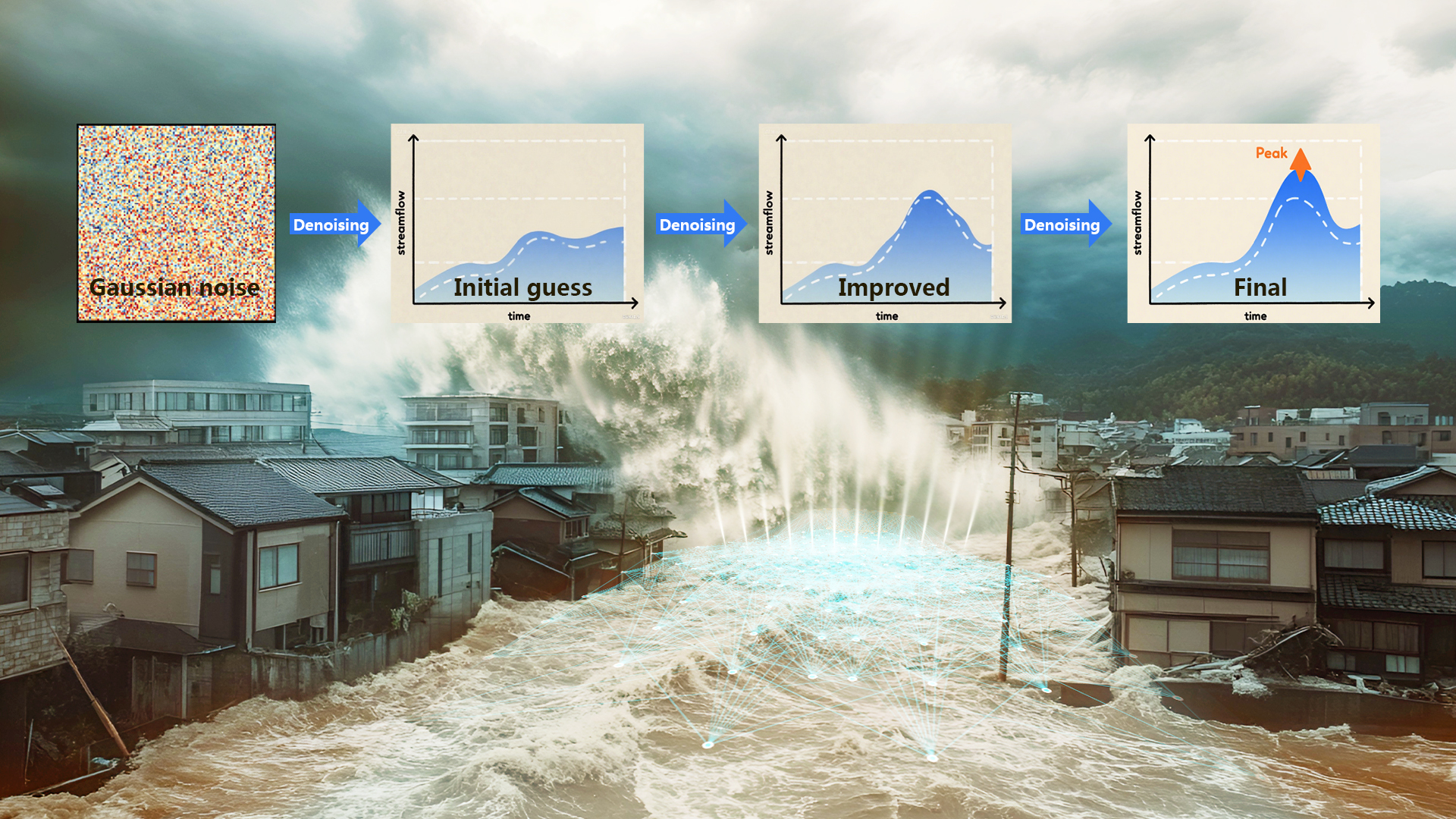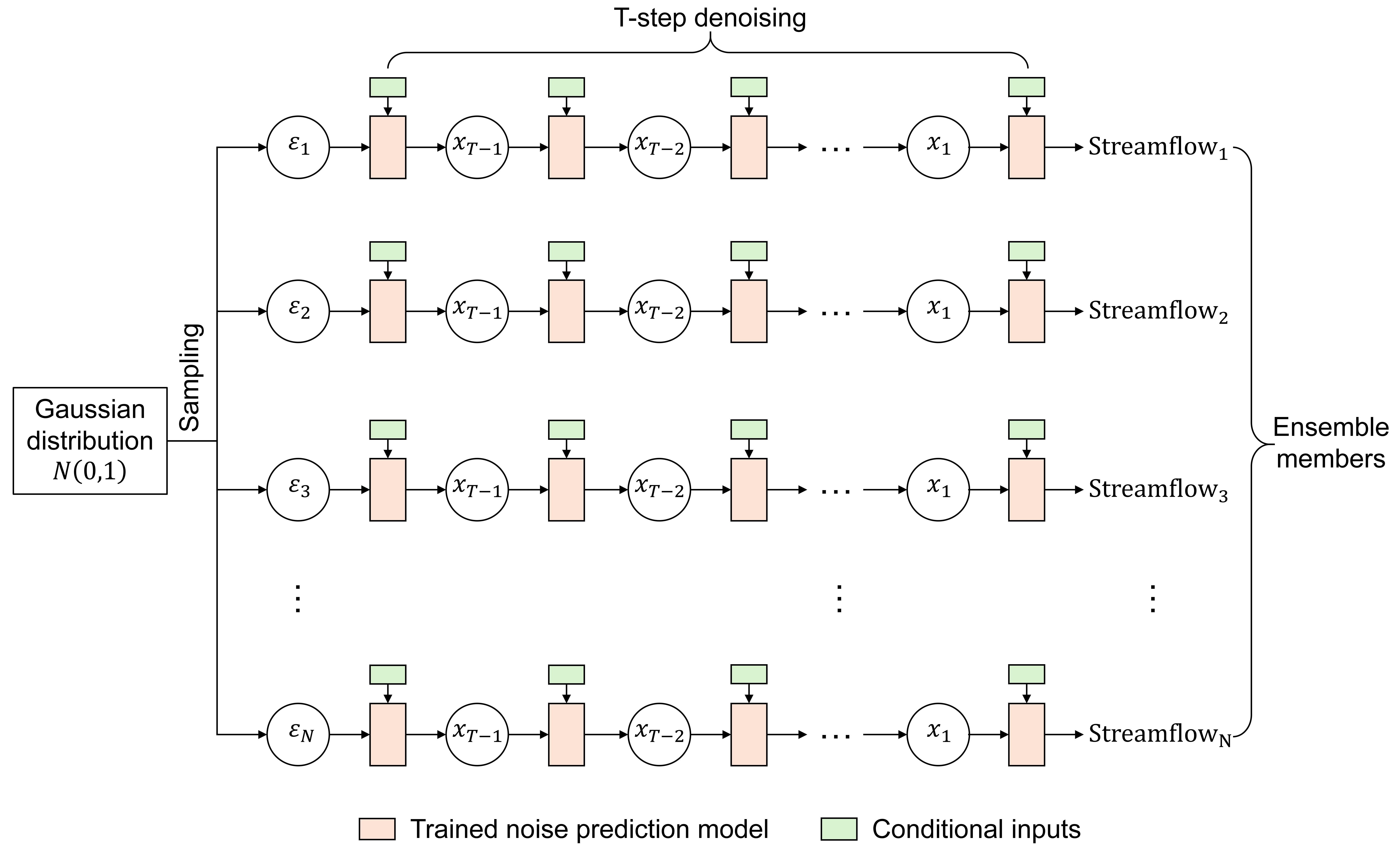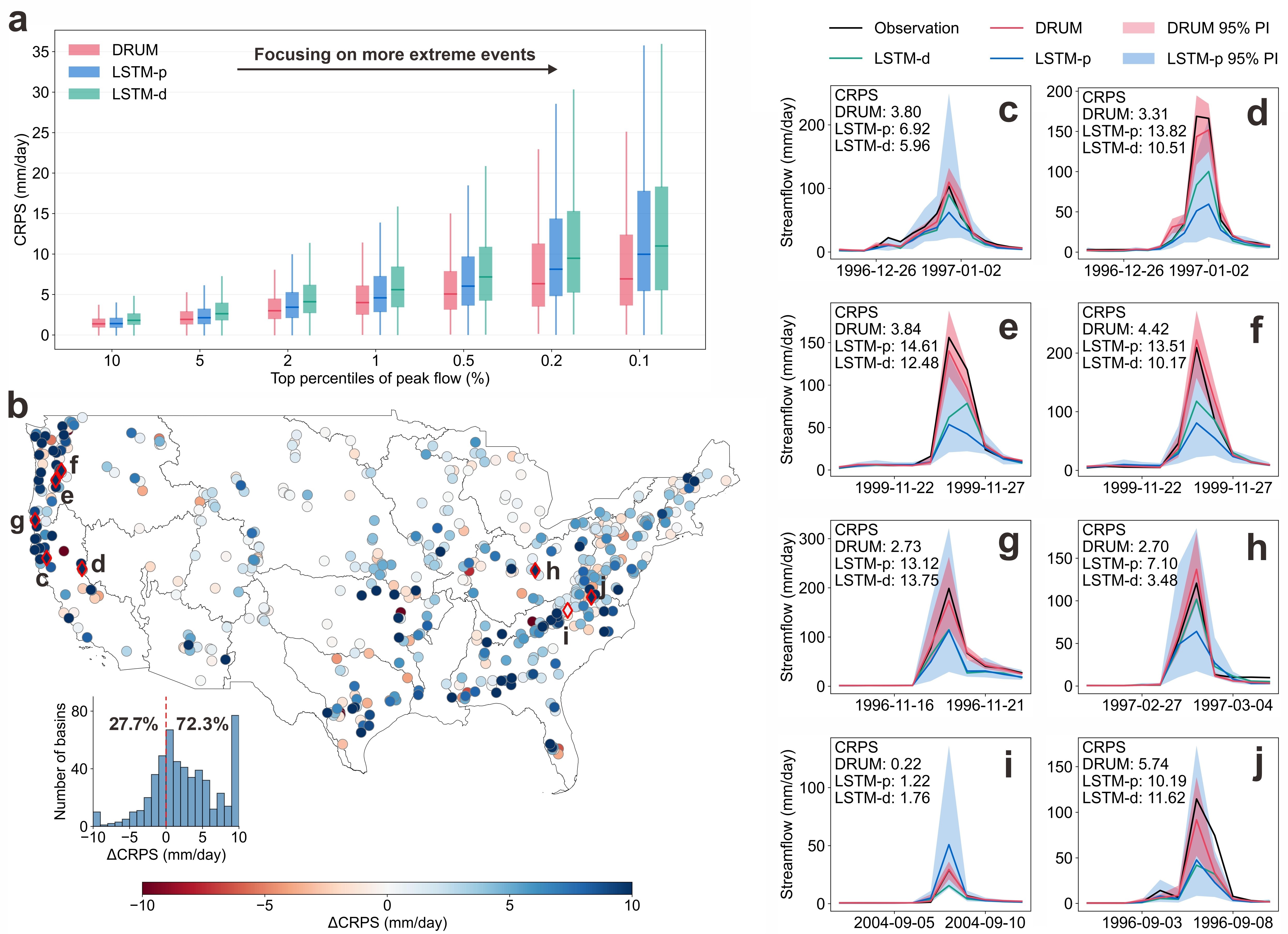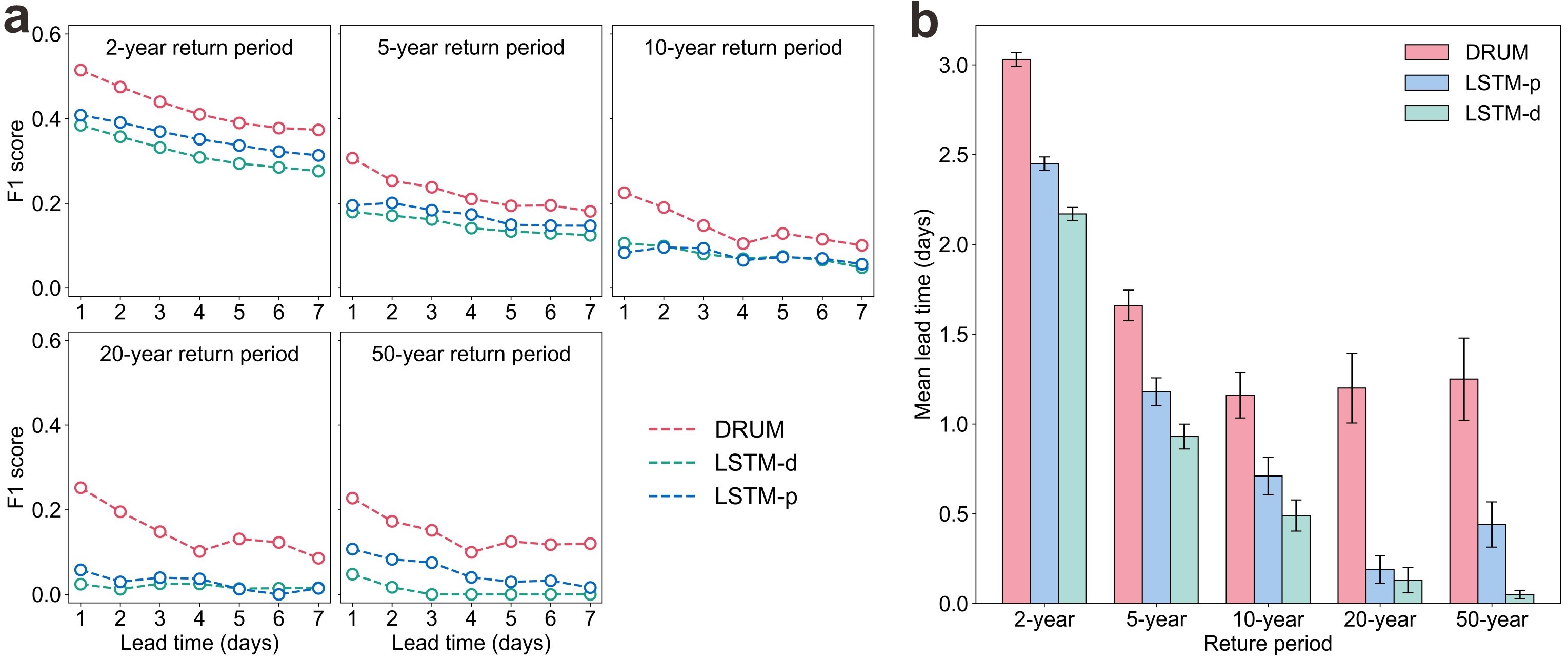Intensifying climate change has led to increasingly frequent extreme flood events worldwide, posing serious threats to human society. According to the latest data from the United Nations Office for Disaster Risk Reduction, the frequency of catastrophic flood disasters globally has surged by 134% since the beginning of this century, causing over 100,000 deaths and direct economic losses exceeding $651 billion.
Traditional rainfall-runoff models often tend to underestimate peak flows and struggle to forecast the most dangerous and destructive flood surges. They are also unable to directly provide probability-based risk assessments, an important capability for disaster preparedness and response.

Professor Yi Zheng’s research group from the School of Environmental Science and Engineering at the Southern University of Science and Technology (SUSTech), in collaboration with the Institute of Atmospheric Physics, Chinese Academy of Sciences (CAS), and other institutions, has achieved a breakthrough by successfully applying diffusion models—a cutting-edge generative artificial intelligence (GAI) technology—to flood forecasting for the first time. Their study not only brings revolutionary advances to flood forecasting technology but also explores new pathways for AI applications in hydrology and the broader Earth system sciences.
Their findings, titled “Probabilistic Diffusion Models Advance Extreme Flood Forecasting,” have been published in the journal Geophysical Research Letters.
The researchers introduced the diffusion-based runoff model (DRUM) method based on diffusion models, which uses deep neural networks to train noise models with runoff data. These models are employed in multi-step denoising operations to generate ensemble forecast data for runoff (Figure 1). DRUM does not require predefined probability distribution forms for runoff; instead, it learns the probability distributions directly from the data. It can accomplish multi-scale task decomposition, breaking down complex flood forecasting tasks into a series of relatively simple sub-tasks, and features flexible conditional generation mechanisms that can effectively utilize conditional information, such as meteorological conditions associated with flood formation. These characteristics enable DRUM to effectively handle the nonlinear, multi-scale, and highly uncertain characteristics in flood forecasting.

Figure 1. Distribution reconstruction (prediction result sampling) process of DRUM
The team validated DRUM’s performance using the CAMELS dataset on 531 representative basins across the United States and compared it with existing deep learning benchmark models. For nowcasting (0-day lead time), DRUM’s accuracy gains increased with flood magnitude (Figure 2a). In 72.3% of the studied basins, it surpassed the benchmark model in predicting the top 0.1% of flows—the most extreme floods (Figure 2b). Furthermore, DRUM’s advantages in probabilistic flood forecasting were further highlighted in eight extreme flood events that exceeded historical data maxima (Figure 2c-j).
Using precipitation forecast data from the European Centre for Medium-Range Weather Forecasts Integrated Forecasting System (ECMWF-IFS), the researchers extended DRUM from nowcasting to operational forecasting with a 7-day lead time. Results showed that DRUM consistently outperformed benchmark methods across various flood magnitudes and different lead times (Figure 3a), while also demonstrating superior flood early warning capabilities (Figure 3b), particularly for extreme events such as 20-year and 50-year return period floods. Notably, it successfully increased the average early warning lead time from approximately 0.2 days to about 1.2 days, achieving nearly a full day’s improvement.
This work fully demonstrates the bright prospects of using generative artificial intelligence for operational flood forecasting, with significant implications for global flood risk assessment, early warning, and emergency response.

Figure 2. Performance of DRUM in nowcasting of extreme flood events

Figure 3. Performance of DRUM in operational flood forecasting
Doctoral student Zhigang Ou from the School of Environmental Science and Engineering at SUSTech and Congyi Nai from the Institute of Atmospheric Physics, CAS, are co-first authors of the paper. Professor Yi Zheng and Associate Professor Baoxiang Pan from the Institute of Atmospheric Physics, CAS, serve as co-corresponding authors, with SUSTech as the first affiliated institution.
Other collaborators include Professor Chaopeng Shen from Pennsylvania State University, Assistant Professor Peishi Jiang from Pacific Northwest National Laboratory, Associate Professor Xingcai Liu and Professor Qiuhong Tang from the Institute of Geographic Sciences and Natural Resources Research, CAS, doctoral student Wenqing Li from the China Institute of Water Resources and Hydropower Research, and Professor Ming Pan from the University of California, San Diego.
Paper link: https://doi.org/10.1029/2025GL115705
To read all stories about SUSTech science, subscribe to the monthly SUSTech Newsletter.
Proofread ByAdrian Cremin, Yilin ZHOU
Photo BySchool of Environmental Science and Engineering